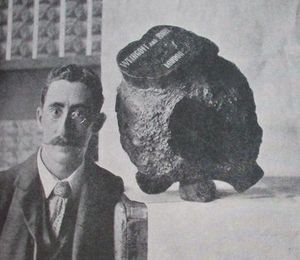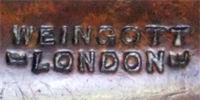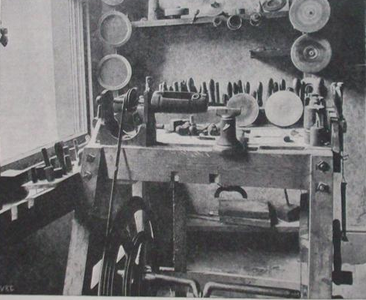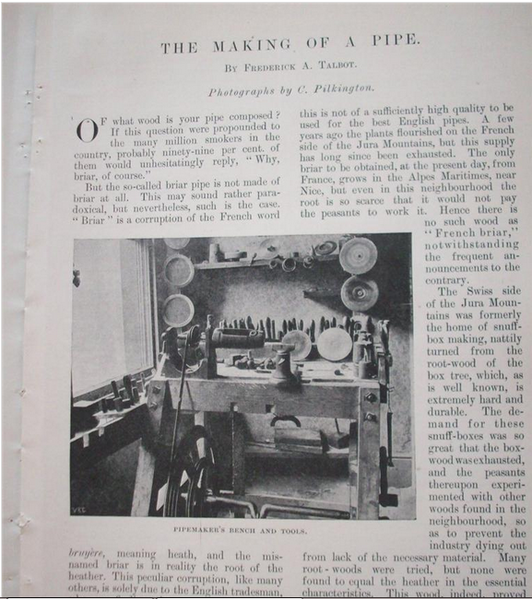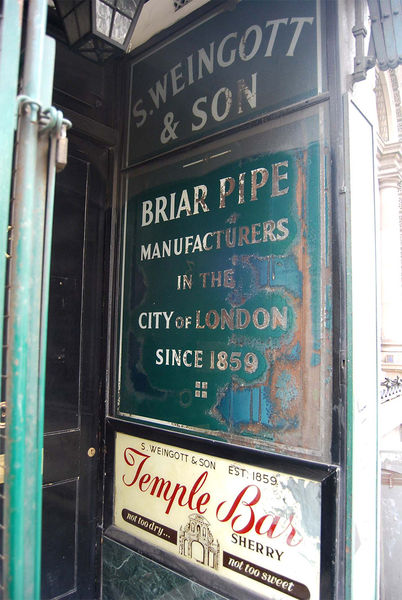Weingott
J. Samuel Weingott was a famous Fleet Street Tobacconist (London, UK) who ventured into making amazing Briar smoking Pipes starting experimenting somewhere between 1865 and 1870 and finally opening his factory in 1883. According to an interview in an English magazine from 1899, Mr. Weingott, a true entrepreneur was dissatisfied with the common clay pipes of the time and disappointed with the continental Briar pipes that were not exploring the true potentialities of this wonderful root.
Prior to 1883 there was scarcely a single Briar pipe manufactured in England. They were all foreign made goods. Later that year, J. S. Weingott conceiving the possibilities that lay in such a non-competitive field, determined to manufacture pipes in England for English customers. His enterprise, at first was regarded askance by others in the trade, while many prognosticated disaster. Undeterred by these ominous forebodings, Mr. Weingott started his industry (S. Weingott & Son), and although it was an uphill struggle at first, he soon became one of the largest pipe factories in the country with a large colonial export: "Only sixteen years have elapsed since I started my factory, and yet today the industry has grown to such proportions that the men employed in this trade throughout the country have instituted a Pipemaker's Union" (from a 1899 interview to an English magazine).
Mr. Weingott, a tobacconist at 3 Fleet Street since 1859 was an insider, a true "connoisseur" who had an incredible knowledge of tobaccos deriving from his trading experience, to which he was adding now a unique pipe manufacturing experience, rapidly becoming the authority in working the Briar. Weingott had very high ethics driven by an obsessive aim at excellence often disapproving and exposing the continental fakes and tricks:
"sold by unscrupulous cheap and foreign firms; but the Englishman is a good judge of a pipe. He detests flaws of any kind. I used to sell these defective blocks of briar at a penny per piece, and have sent away as many as 40.000 condemned Briars at a time, but now I burn them all! The Briars were sent abroad, and the cracks and flaws stopped with putty or some other composition, and then stepped in a strong solution of permanganate of potash, which deeply coloured the wood and made the defect invisible except on close inspection. all those Briars you see of chestnut colour have passed through the permanganate of potash bath or some other dye, and are then varnished, and you may rest assured that there is a defect somewhere-they would not be that colour if it were not so, because natural briar, although it becomes dark with age and exposure, displays the natural grain."
For most of the XIX and XX century his pipes were some of the best ever made in London, respecting his directives of 1 craftsman per pipe and never a "ford like" assembly line so commonly adopted in many workshops of the time. these pipes are extremely rare and much sought after by pipe collectors worldwide.
The family sold the business in the 1930s and since then they have been made by, or used private label pipes, under several different owners. In 1980 Cadogan bought the brand and,according to many pipe smokers, effectively killed it. Initially by lowering the extremely high quality level of this classic brand and later on by finally discontinuing it.
Weingott was for most of the XX century THE oldest brand of pipe manufacturers in London, or at least the oldest legal manufacture registered in the London Directories. Notice the explosion in pipe making factories by the turn of the century and contrast it with the single mention to Weingott in 1884: Briar Pipe Makers in London Directories.
Gallery
Today (2012) the shop is owned by a wines & spirits retailer, the original Weingott tobacco shop sign is still visible on the right hand side; photo by: Danny McL
